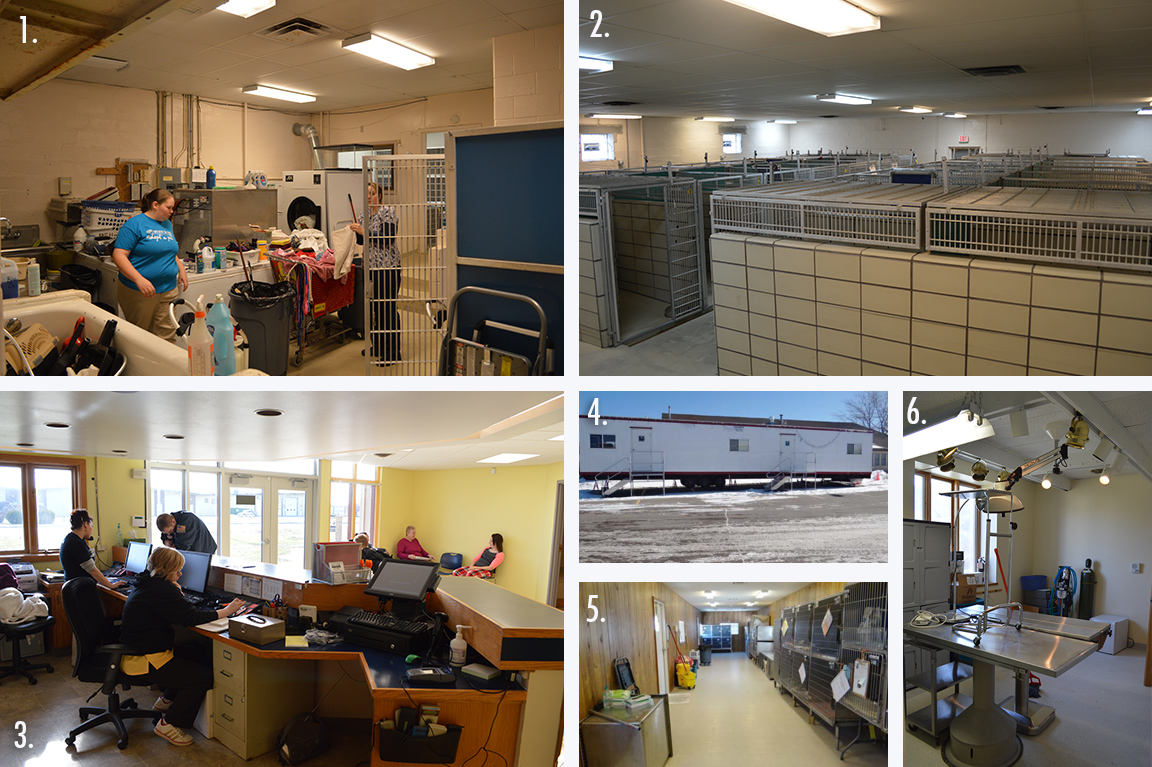|
The Problem
All dogs are housed in one large room, with rows of kennels that face each other. This set up is not ideal as dogs react to seeing each other, increasing their stress levels, and contributing to illness and reduced immune response. We’ve been able to make some improvements by adding ceiling buffers to muffle the sound, but the barking and noise can still be deafening. Cat housing is so limited that we have had to rent a 1,000 square foot trailer for the last four years to accommodate the number of cats coming into the shelter from the Racine community. The trailer is kept in the parking lot of the shelter and used to isolate contagious illness and quarantine vulnerable animals like neonatal kittens and their moms. The current shelter provides limited space for our veterinary work, making it challenging to appropriately segregate animals and manage disease transmission to the degree we know we are capable. Our surgical recovery space is shared with the laundry facilities, providing ongoing space and logistical challenges for our veterinary staff and the animals they care for. There is no public space in the current building. Community members and their animals who attend our public vaccine clinics must wait in their cars for their turn to receive vaccines. Further, there is no space for volunteer training, limiting our ability to expand our volunteer program. Located amidst an industrial area on Chicory Road, the building is not on a main thoroughfare and can be difficult to find.
Core facility issues
1. Shared space for laundry, storage, surgery recovery and overflow animal holding.
2. Dog lodging space is loud, stressful and unpleasant to visit.
3. No privacy at reception for strays, surrenders, private euthansia or other sensitive services.
4-5. Limited cat housing demanded the rental of a trailer to house overflow cats.
6. Limited surgical space and capacity, in a room that is not sufficient for the number of surgeries we need to perform.
|

Please Donate!
The Wisconsin Humane Society is committed to providing protection, shelter and care for wild and homeless animals. Because of generous donors, we are able to rescue, rehabilitate and rehome thousands of animals like me every year!

 The existing Racine Campus serves the community in many important ways, but does so in a facility originally constructed as a potato barn. Although we have done much to improve the current shelter, we still lack the space for veterinary care, behavior evaluations, appropriate housing, proper socialization of animals, and community services.
The existing Racine Campus serves the community in many important ways, but does so in a facility originally constructed as a potato barn. Although we have done much to improve the current shelter, we still lack the space for veterinary care, behavior evaluations, appropriate housing, proper socialization of animals, and community services.














